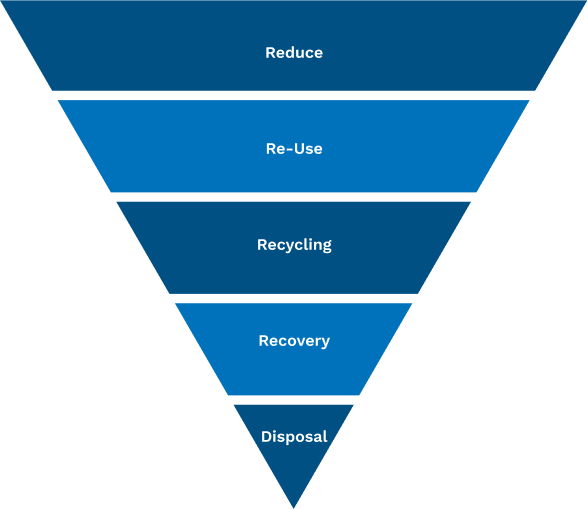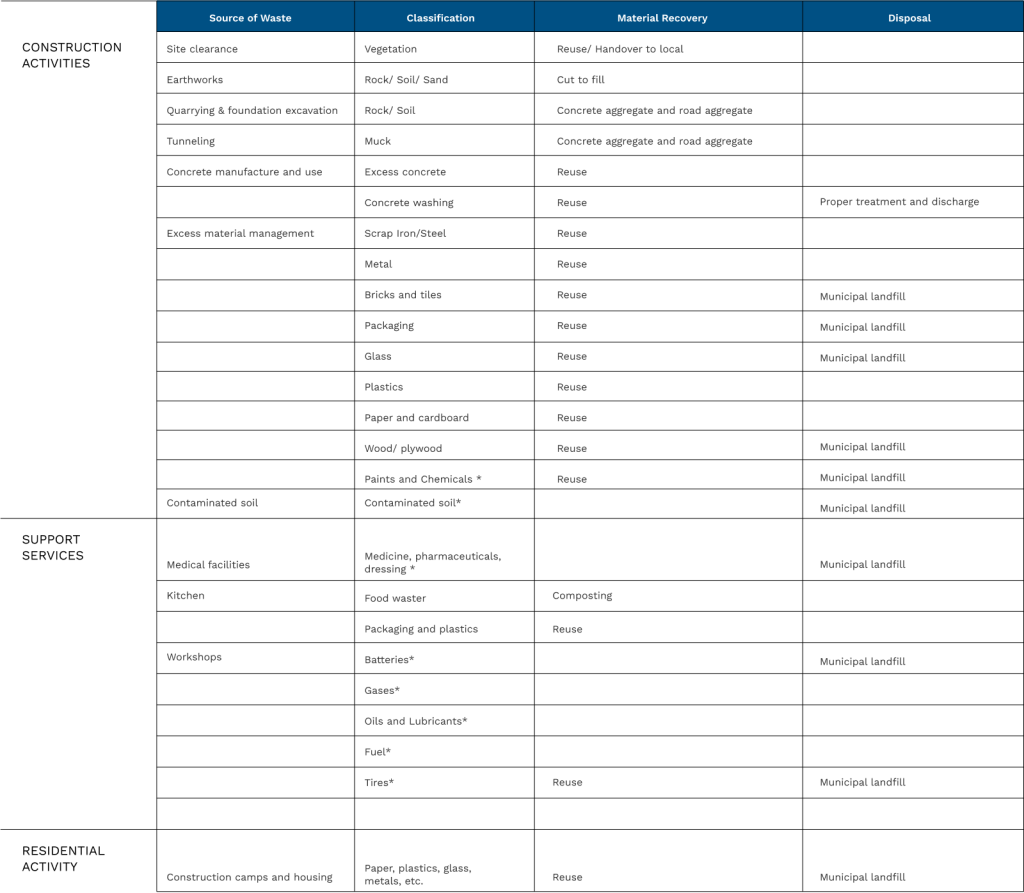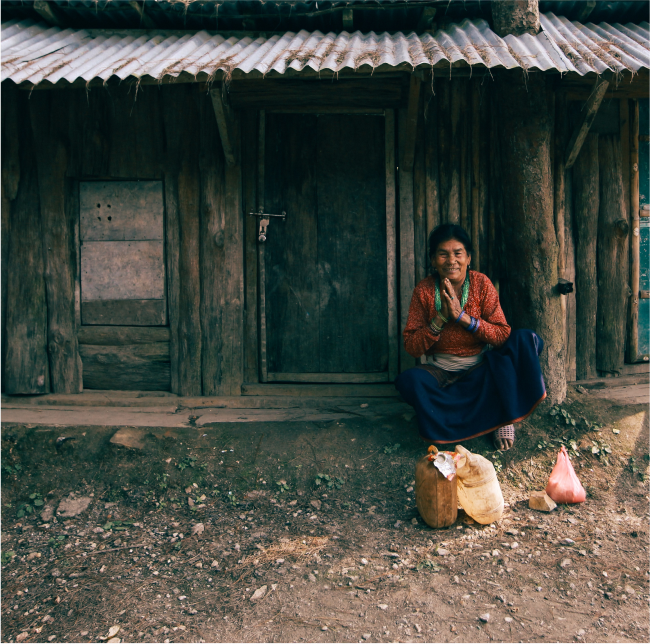COMMUNITY RELATIONS
At our company, we firmly believe that conducting business in a socially responsible manner is essential for the long-term success and sustainability of our operations. We understand that our actions not only impact the environment but also the communities in which we operate, and we take our responsibility seriously. Therefore, corporate social responsibility (CSR) is at the forefront of everything we do, and we strive to go above and beyond in our efforts to contribute positively to society while reducing our environmental footprint. We believe that by investing in CSR initiatives, we can create shared value for our stakeholders and make a significant difference in the world.
WE MAKE A DIFFERENCE
We have been making a difference in three of our areas which are explained below.
Waste Management Plan
The primary goal of waste management is to minimize the negative impact of waste on the environment and public health.
Protection of Fish Ecosystem
Fish protection from waste is a crucial aspect of environmental management. Waste materials and urban waste, can pollute waterways & harm fish populations.
Environment & Social Policy Statement
Environmental and social policies are designed to promote sustainable development and protect the environment and human well-being.
WASTE MANAGEMENT PLAN
- Avoid or minimize adverse impacts on human health and the environment by avoiding or minimizing pollution from project activities
- Promote more sustainable use of resources, including energy and water
- Provide a systematic procedure for the waste management
- To maintain the neat and clean environment in the project construction area
WASTE HIERARCHY
The waste hierarchy presents waste management stages commencing with the most preferable option to the least preferable option. Waste prevention is the most preferred option, followed by reuse, recycling, and recovery and the last option is safe disposal, as presented in the Figure below.

WASTE ASSESSMENT

Waste Management
- Each contractor/sub-contractor must implement their own waste recycling system, i.e. separate bins for food waste, plastics, paper, wood, glass cardboard, metals, etc.
- Portable toilets must be monitored and maintained daily.
- Below-ground storage of septic tanks, if installed, must withstand the external forces of the surrounding environment. The area above the tank must be demarcated to prevent any vehicles or heavy machinery from driving around the area.
- Waste collection bins and hazardous waste containers must be placed at various areas around the site for the storage of organic, recyclable and hazardous waste.
- A dedicated waste area must be established on-site for the storage of all waste streams
- Signage/color coding must be used to differentiate disposal areas for the various waste streams.
- The position of all waste storage areas must be located away from water sourses and ensure minimal degradation to the environment.
- Waste storage areas must be under the roof to prevent access to water.
- Collection bins placed around the site and at subcontractors’ camps must be maintained and emptied on a regular basis.
- Waste must be stored in designated containers and not on the ground.
- Inspections and maintenance of bunds must be undertaken daily. Bunds must be inspected for leaks or cracks in the foundation and walls.
- It is assumed that any rainwater collected inside the bund is contaminated and must be removed and stored as hazardous waste, and not released into the environment. If any leaks occur in the bund, these must be removed immediately.
- Hazardous waste must be stored within a bonded area. The volume of waste stored in the bunds must not exceed 110% of the bund capacity.
- The location of all temporary waste storage areas must aim to minimize the potential for impact on the surrounding environment, including prevention of contaminated runoff, seepage, and vermin control.
- Waste storage shall be in accordance with all Regulations and best-practice guidelines and under no circumstances may waste be burnt on site.
- Vegetation removed from the site must be chipped, removed from the site and disposed of at an appropriate waste disposal facility or used as mulch on site.
- All waste removed from site must be done so by a registered/ licensed subcontractor, whom must supply information regarding how waste recycling/ disposal will be achieved.
- The registered subcontractor must provide waste displays for all removals at least once a month.
Disposal
- Waste generated on site must be removed on a regular basis. This frequency may change during construction depending on waste volumes generated at different stages of the construction process.
- Waste must be removed by a suitably qualified contractor and disposed of at an appropriate landfill site.


PERFORMANCE MONITORING & TRAINING
- Monthly volumes/ mass of the different waste streams collected
- Monthly volumes/ mass of the waste that is disposed of at a landfill site
- Monthly volumes/ mass of the waste that is recycled
- Data illustrating progress compared to previous months
Environment & Social
Policy Statement

- Avoid/minimize our impacts on the environmental and social components. Where unacceptable impacts remain, we focus on implementing compensatory actions to address residual impacts on the environment;
- Follow all applicable environmental/social regulations and IFC performance Standards without any compromise;
- Comply with the mitigation strategies (3R: Refuse, Reuse, Recycle) sustainably as much as possible during the entire project lifetime;
- Promote a safe and healthy working environment for all employees/workers by providing equal opportunity in all aspects of employment and will not engage in or tolerate unlawful workplace conduct, including discrimination, intimidation, or harassment.
- Identify, avoid or actively manage all project related risks to the health, safety, and security of affected communities
- Promote the biodiversity conservation and sustainable management of living natural resources by applying the
- latest techniques in combination with local knowledge and practices
- Engage with affected or potentially affected interested stakeholders in an apparent manner to ensure that they can express their views on positive opportunities, risks, adverse impacts, and prevention and mitigation measures.
- Meet internationally accepted best practices and, where necessary, exceed local regulatory standards.
- Disclose all the relevant project information to the concerned stakeholders in a timely and inclusive manner and maintain open lines of communications throughout the project life;
- Monitor, audit, and review environmental and social performance compliance regularly to ensure continual improvement.
PROTECTION OF FISH ECOSYSTEM
Seti Khola harbors a total of 40 fish species belonging to 8 orders and 12 families. The present study showed the presence of long and short migratory fishes in Seti Khola. In order to protect the fish, construction of appropriate fish passage in the project dam has been done. Similarly, maintenance of good water flow downstream the dam has created threshold riverine habitat preventing reduced dissolved oxygen and increased water temperature which are directly associated with physiological processes of fishes.

